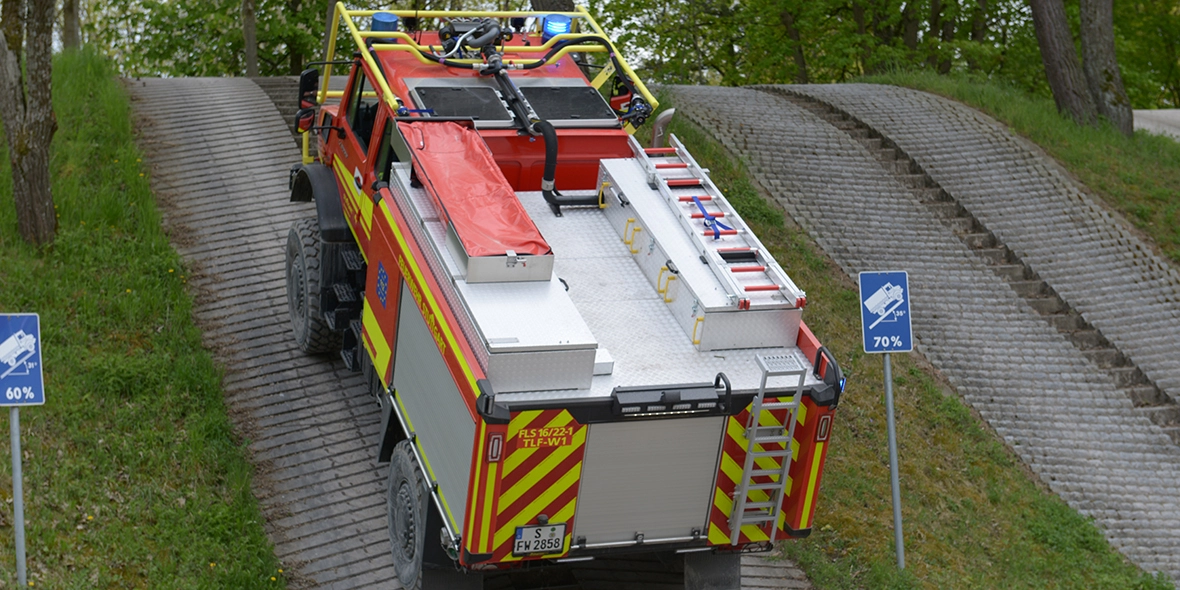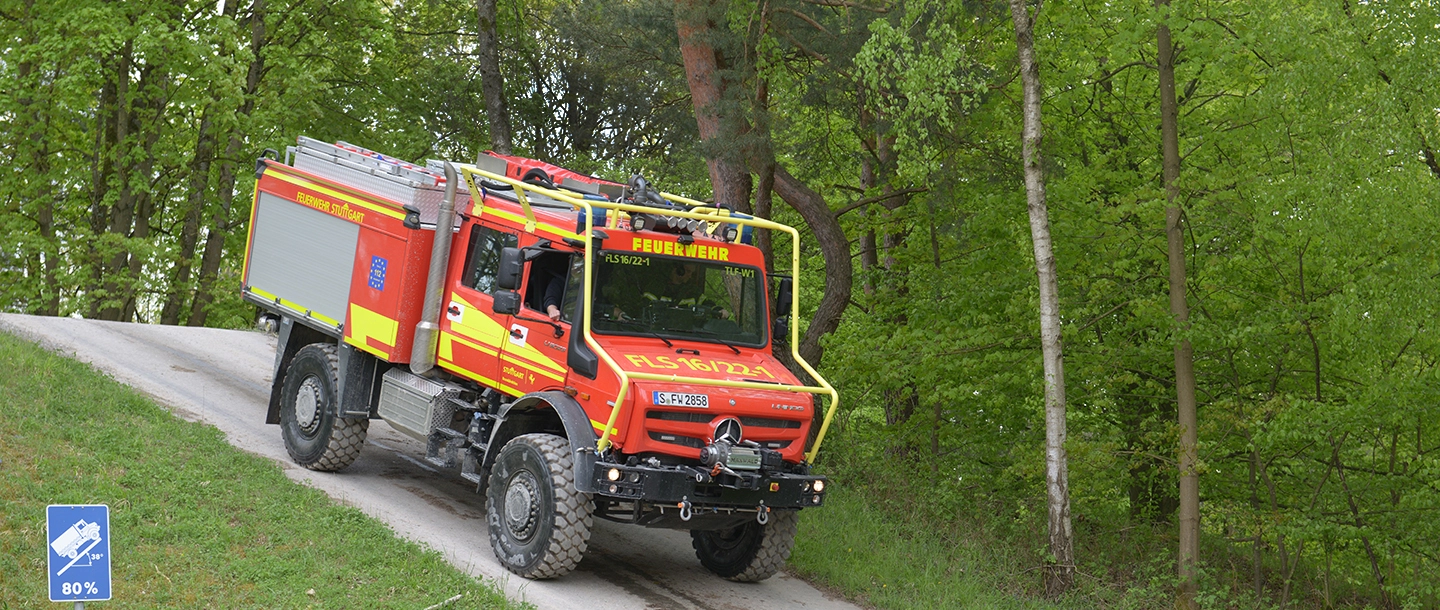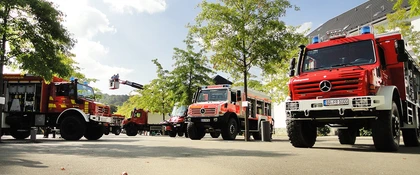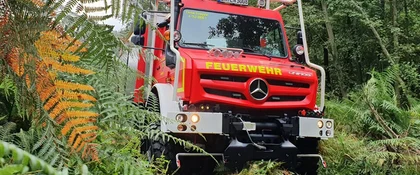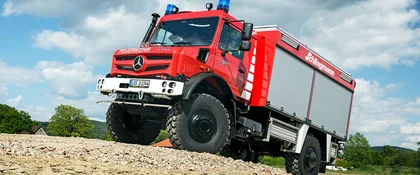The Unimog TLF-W is the benchmark in its class.
The Stuttgart fire brigade has been using Unimog vehicles since 1965. Initially, they had two dry agent tender trucks based on Unimog S. These were followed by several series of water tender trucks and a rescue vehicle rail for road-rail use. Unimog fire service vehicles of the air raid fire protection service and expanded civil protection service were also stationed in Stuttgart and later transferred to the municipal fire service fleet. And Unimog’s success story in Stuttgart still continues to this day: newly designed water tender trucks for use in forest fires and floods and rescue vehicles based on the current Unimog series are currently being procured. It can even be argued that they are writing vehicle history in Stuttgart.
Only real with the Unimog.
This is because the fire brigade of the Baden-Württemberg state capital is dazzling the experts with a completely new fire truck – a real TLF-W (forest fire water tender truck). And what makes it a real TLF-W? Previously, for financial reasons, calls to tender ignored the unmistakable and essential characteristics required by extreme off-road trucks for fighting vegetation fires. Now, however, the Stuttgart fire service is guided by a new regulation imposed by the German Fire Brigade Association.
While numerous chassis and body suppliers assured the association of their vehicles’ suitability, the Unimog ultimately proved to be the only worthwhile solution. In future, the two completely redesigned U 5023 TLF-Ws will be a highly effective supplement to the fire trucks of the professional fire brigade and the Stuttgart volunteer fire brigade.
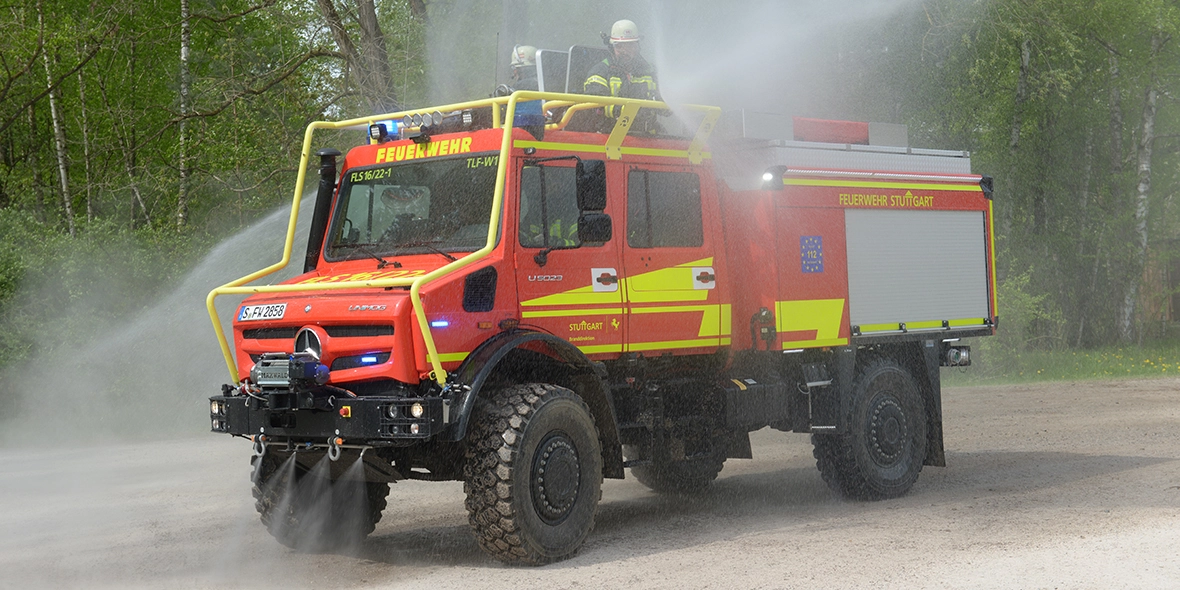
The benchmark as the new norm.
The fact is that the new Unimog is the TLF-W benchmark. This vehicle should be the new standard. The new Unimog TLF-W is very compact at a length of 6950 mm and with an actual mass of 13,900 kg. The low body and tank arrangement also mean the truck has a very low centre of gravity.
The vehicle’s distinctive features are its 1.2-metre fording capability, a self-recovery winch and the crew cab, which has a separate air-sprung seat for every crew member and comes with air-conditioning and auxiliary heating. The two roof hatches above the rear row of seats are well thought out: When closed, these hatches are watertight under pressure and can be walked on outside without restriction.
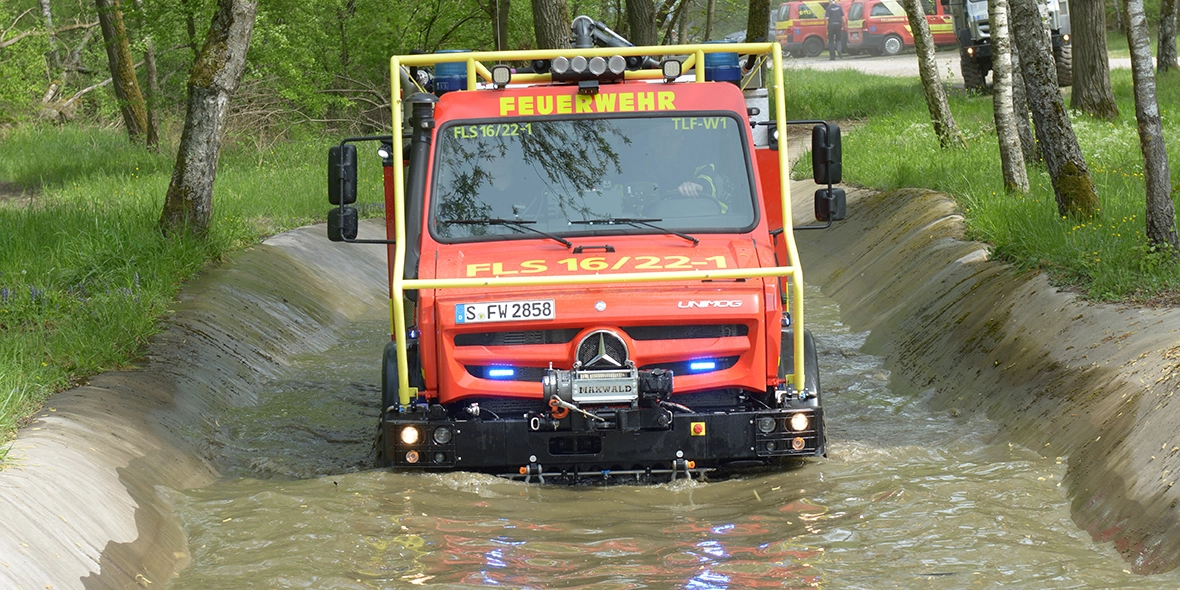
Self-sufficient and fireproof.
In addition to digital BOS radio technology, the Stuttgart-based TLF-Ws also have completely autonomous analogue radio technology. The standard solution, with a receiver that uses both analogue and digital radio via a Lardis system, was deliberately not used here. No radio handsets are installed on, only speakers because the TLF-W is hardly every used alone for normal pumping tasks. Every crew member has their own headset.
It is fitted with essential heat protection on all critical components and lines, innovative extinguishing technology on the roof, a special signalling system, surround lighting and a tyre pressure control system that can be operated from the multifunctional steering wheel. Beadlock rims prevent the tyres from rotating on the rims.
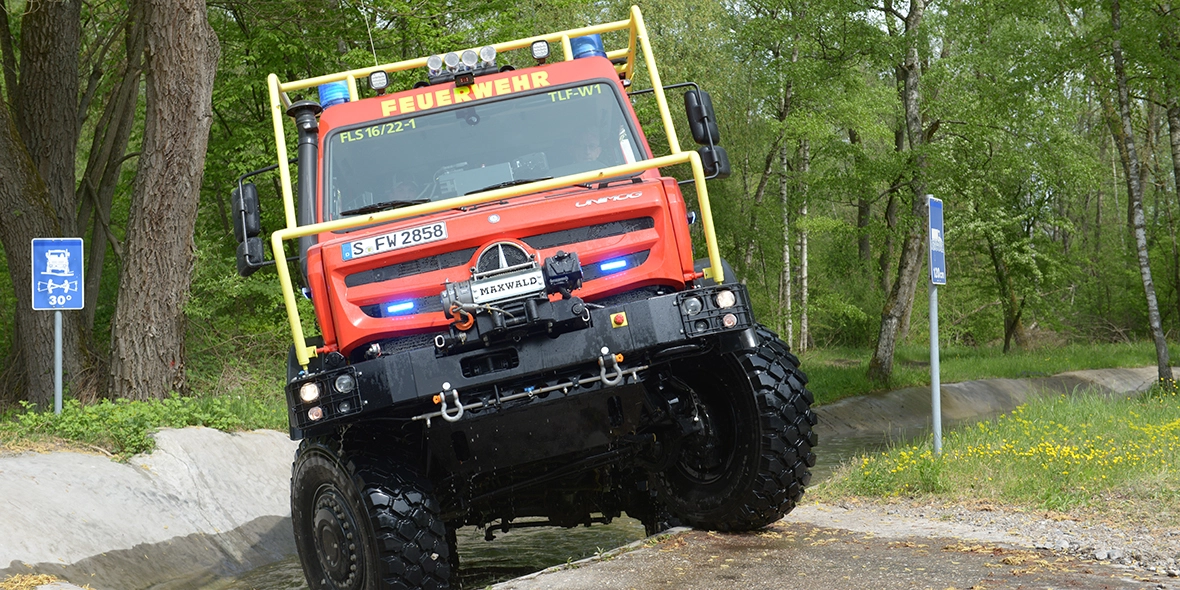
All-round vision.
The Inclisafe sensor system also raises the bar. It uses rows of green, yellow and red LEDs to indicate the severity of lateral tilt. In addition to a shutter reversing camera with sound transmission, the truck features a front camera, a turning assistant with camera and sensors and a monitor on the right A-pillar. The sensors also signal every movement to the right of the vehicle acoustically.
The front camera significantly reduces the blind spot in front of the vehicle and has a dedicated screen at top centre between the driver and the vehicle operator. The reversing camera shares the screen of the Lardis system. Together, the two Stuttgart TLF-Ws form the minimum required tactical pair, i.e. two TLF-Ws that secure each other in the field.
